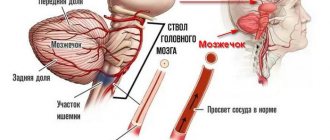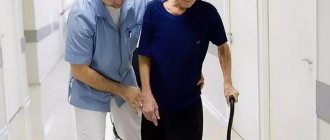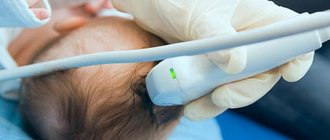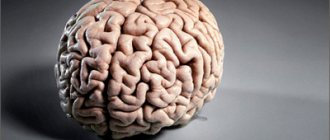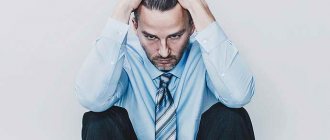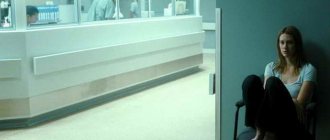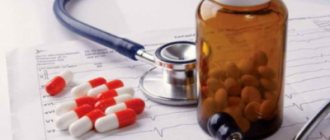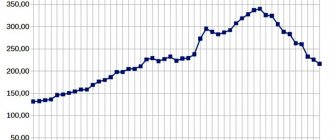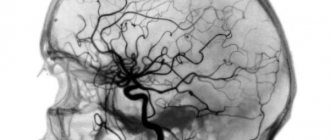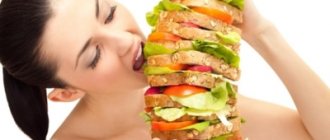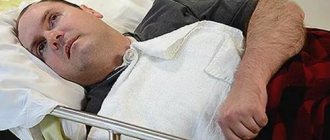The importance of physical therapy
To understand why exercise therapy is needed after a stroke, we should remember that movement disorders are caused by necrosis of some brain cells.
Structures destroyed by ischemia cannot be restored, but their functions can be taken over by other brain tissues. Exercise after a stroke can help keep your brain working. In addition to creating new neural circuits necessary for mobility, restorative exercises will help:
- avoid bedsores;
- normalize muscle tone (eliminate myospasms, reduce paresis);
- prevent congestive pneumonia;
- improve blood supply to internal organs.
The first exercise therapy for stroke is carried out in a hospital, and then gymnastics must be continued at home. Relatives need to know the rules for preparing the patient for classes.
Traditional methods
Traditional medicine suggests using the following means of recovery after a stroke at home: massages with special products and oils, as well as ingestion of natural preparations. But before using traditional methods, you must definitely consult with your doctor and get the go-ahead from him.
For massages, it is recommended to use vegetable oils enriched with extracts from medicinal plants, melted pork fat, lard ointment with pine needles and bay leaves. Such compositions are thoroughly rubbed into the sore arm and massaged to increase blood circulation.
A tincture of mountain arnica flowers, natural honey with royal jelly, a composition of peppermint, St. John's wort and motherwort, as well as a tincture of Japanese Sophora help well.
Medicines to relieve pain
Doctors prescribe different medications to their patients to relieve pain. It is impossible to predict in advance what effect this or that drug will have, or whether the patient will tolerate it well. Therefore, it is rarely possible to find suitable medications on the first try. However, it is likely that one or another combination of medications will be able to relieve your pain.
Drug groups:
- analgesics;
- anticonvulsants;
- antidepressants;
- drugs that relax muscles;
- non-steroidal anti-inflammatory drugs;
- injections of steroid hormones.
Do not voluntarily take any medications to relieve pain. These drugs tend to cause serious side effects. For many patients, the harm they cause is worse than their positive effect. Do muscle stretching exercises recommended by your physical therapist. Try treatments that stimulate nerves and muscle fibers with mild electrical shocks.
Why does left-sided paralysis occur?
The brain is the central organ of the nervous system.
It consists of certain zones, each of which is responsible for individual body functions.
When any of these areas are affected, characteristic symptoms appear.
In the development of pathology, the principle of so-called reverse symmetry works, i.e. when the right hemisphere of the brain is damaged, paresis of the left side of the body develops.
The right side of the hemisphere is responsible for creativity and the emotional component. When a stroke develops in the right hemisphere, symptoms such as impaired speech or the inability to express thoughts clearly appear, so identifying such a condition is much more difficult.
As practice shows, circulatory disorders in the right side of the brain, in which the left side of the body is paralyzed, occurs in 57% of diagnosed cases.
Rehabilitation after stroke and TBI: modern principles of restoring fine motor skills of the hand
Relevance . Persistent motor disorders of fine motor skills of the hand are a serious complication of injuries and diseases of the nervous system. Every year in Russia there are about 400,000 new cases of strokes, 400,000 cases of traumatic brain injury (TBI), of which severe TBI accounts for 4 to 10%. In Russia, traumatic injuries and diseases of the spinal cord occur in 55 - 65 cases per 1 million population, with the formation of severe tetraparesis in 50% of victims, leading to 1st and 2nd degree disability in 80% of cases. According to the Stroke Register of the Scientific Center of Neurology of the Russian Academy of Sciences, by the end of the acute period, motor disorders are observed in 81.2% of surviving patients. The most striking manifestation of motor activity disorders is post-stroke paresis of the arm. According to the literature, in 70% of patients, active motor skills of the hand are not restored by the time of discharge from the hospital, and in 50% of patients, motor functions of the hand do not undergo significant changes within 6 months after a stroke. Given the uneven recovery of movements and the slower regression of fine motor impairment, motor deficits in the hand may be the leading cause of loss of professional skills in patients. Hand movement disorders are the most difficult for the patient due to its great importance in ensuring daily life activities and self-care.
The main clinical manifestations of functional deficits of fine motor skills are:
- ► in limiting the mobility of joints and the development of their contracture;
► in a decrease in muscle strength and endurance;
► in violation of coordination of movement against the background of local or spreading throughout the arm pain, swelling, muscle-tonic syndromes;
► in violation of the sensitivity of the hand and fingers.
Modern medical rehabilitation programs for the hand and fingers, aimed at restoring precise and coordinated movements, are based on compliance with the following principles:
- ► early onset;
► specialization and complexity;
► duration and continuity at all stages of medical rehabilitation of the underlying disease or injury.
Motor retraining is achieved thanks to the high functional adaptability of the hand, which is realized through intensive, high repetition frequency, hand-specific motor tasks, under conditions of biofeedback (BFB) and increased motivation for rehabilitation of motor function restoration.
The effectiveness of the programs is assessed by achieving the everyday, social and professional integration of patients. It is very important to adhere to the principle of early rehabilitation of the hand, which can significantly optimize the outcome of the injury. Each day of delay increases joint stiffness, promotes the development of the adhesive process in the periarticular tissues of the joints of the fingers and hand and the consolidation of the pathological motor stereotype in the central nervous system. In the absence of adequate rehabilitation, trophic disorders: swelling, decalcification, contracture - increase, which leads to the formation of the “uncontrollable hand” syndrome.
Factors that hinder and slow down the functional recovery of fine motor skills include:
- ► damage (diseases) to neighboring tissues (bones, joints);
► lack of correct diagnosis, timely optimal medication and/or surgical treatment;
► sensitivity disorders (hyperpathy, causalgia), contractures, severe trophic disorders, etc.;
► time factor, i.e. the period between the acute period of stroke or TBI and the start of treatment;
► cognitive disorders.
of great importance in restoring fine motor skills at various stages of treatment. Its tasks are:
- ► the most complete restoration of hand function and prevention of complications, that is, contractures, trophic disorders;
► preventing the progression of hand dysfunction and stabilizing the consequences;
► adaptation of patients to performing household and industrial skills, preparation for work.
The tasks of exercise therapy are solved in two stages:
- ► at the first stage, joint mobility is restored, mobilization and strengthening of hypotrophied muscle groups;
► at the second stage, the functional activity of the hand and fingers is restored, the kinematics of the upper limb is optimized, and social and everyday adaptation is carried out.
Currently, thanks to the rapid development of neurorehabilitation, the possibilities of exercise therapy in restoring the hand and arm have expanded significantly. Along with the use of isometric, passive, active dynamic exercises, exercises with objects, weights, resistance, and the development of everyday self-care skills, training on mechanotherapy devices is actively used. In the early stages of rehabilitation, passive motion devices are used: Kinetec (KINETEC SA France), Artromot (OrmedD-GmbH & Co, Germany), Motomed (RECK-Technik GmbH & Co. KG (Germany), etc.
In case of disruption of innervation and changes in sensitivity, development is permissible only within the limits of tolerable, quickly overcome pain. Therefore, in such cases, short-term, within the limits of minimal pain, frequently repeated active exercises in a dynamic mode are recommended until muscle fatigue develops (“every hour - 5 minutes”).
At the stage of restoration of functional activity, the development of the joints of the fingers and proximal parts of the hand in an active mode is of paramount importance. Training on devices allows you to achieve an improvement in the functional state of the hand due to a large number of repetitions of the same type, controlled in terms of speed, range of motion and tolerance of exercises and ensures the creation of an objective, up-to-date protocol for the safest training possible.
To develop the distal parts of the hand, such simulators as Amadeo® System and Pablo® System (Tyromotion Gmbh, Austria), sensor gloves such as HandTutor (Meditouch, Israel) are used. They allow, under biofeedback control, to conduct fine motor skills training in various motor modes, several planes, with varying degrees of task complexity. A distinctive and, perhaps, greatest advantage of hardware rehabilitation is the presence of a feedback module. Currently, biofeedback is recognized as a key element in monitoring the correct execution of movements and in consolidating the results of motor retraining. The presence of a biofeedback module ensures maximum patient activity and participation in the restoration of lost hand functions.
Of great interest is a set of kinesiotherapy equipment Leonardo (Chinesport, Italy), developed under the leadership of A. Crippa, Associate Professor at the Faculty of Kinesiotherapy at the Medical University of Milan. Leonardo simulators fully meet the requirements for rehabilitation devices for restoring proprioception, motor control, attention and cognitive processes in patients with movement disorders, regardless of the cause. The Leonardo series exercise machines are individual modules made of beech wood, of different shapes, volumes and sizes, adapted to perform exercises with the arms, legs and torso. Control over the execution of the movement is carried out using a light beam (similar to the beam of a laser pointer), the source of which is mounted on the working segment of a limb or body or on the working surface of the movable module and does not violate the kinematics, and the screen with markings. For control, the kit also includes several specially designed protractors, an electronic protractor, and devices for sound and vibration signals. The kit consists of several modules. The entire set of modules is completely stored in a small suitcase.
Of particular interest is the set for developing fine motor skills of the hand. The modules of the Leonardo simulator are somewhat reminiscent of materials for classes using the Montessori method for developing a child’s fine motor skills. This is a set of small cylinders of different heights, hemispheres, wooden half-rollers, boards with holes, protractor arches, a board for abducting the first finger of the hand with a protractor. The set contains modules for the formation of various types of grasps and the development of sensory skills. Finger dexterity training is provided by special prefabricated structures equipped with biofeedback. With their help, exercises are performed to increase mobility and coordination of movements in the hand and fingers, and changing the amount of weight not only complicates the motor task, but also leads to an increase in the strength of the hand muscles.
Comments
Pain in arms and legs due to muscle spasms
In people who have had a stroke, the muscles may become hard and stiff. Some muscles control the flexion of the arms and legs, while others control their extension. Normally they are in a state of balance. A stroke damages parts of the brain that send nerve impulses to the limbs. The muscles that flex the arms and legs may begin to dominate those that extend the limbs. This problem is called contracture. It causes cramping and severe pain.
Muscle spasms need to be treated as soon as possible, otherwise the arms or legs will bend and stiffen so that they cannot be straightened. Treatment includes physical therapy, medication, and strengthening the correct position of the arms and legs using splints. Sometimes botulinum toxin (Botox) injections into the muscles are prescribed. This medication temporarily paralyzes the muscles so they can no longer bend and cause spasms. As a rule, Botox injections are prescribed for pain in the arms, but not in the legs.
Contact a specialist to find the optimal combination treatment for you. As mentioned above, you cannot waste time. The doctor will likely prescribe baclofen, tizanidine, or other medications. But the emphasis should be placed not on them, but on physical therapy. Splints may be needed to secure the arm or leg in an extended position. The last radical remedy is tendon surgery.
Watch a video about what rehabilitation methods after a stroke are used in a specialized medical institution. You can do the same thing at home without having to pay a lot of money.
Hardware physiotherapy at home
In medical equipment stores and pharmacies you can purchase many compact devices that can be useful for the recovery of patients who have suffered an acute cerebrovascular accident. They have simple rules of use, undergo clinical testing and, if the procedures are carried out correctly, constitute a worthy alternative to a physiotherapy room.
When purchasing, you need to be sure that the product has the necessary accompanying documentation and has been verified, so it is better not to use unverified retail outlets. Any of the procedures is prescribed exclusively by a physiotherapist-rehabilitation specialist after consultation with a neurologist and cardiologist.
Darsonvalization
The Darsonval Corona device has several electrode attachments through which high-frequency alternating current passes. When in contact with the body or held over the skin at a short distance, sparks appear, accompanied by a characteristic crackling sound. The procedures have the following effects:
- activate blood circulation;
- accelerate the delivery of oxygen to affected tissues;
- stimulate blood flow and immune processes;
- have a pronounced analgesic effect;
- normalize vascular tone;
- improve sleep.
Darsonval on the limbs
After a stroke, darsonvalization can accelerate the restoration of damaged neural connections, improve the motor function of the limbs, and the rheological properties of the blood. The duration of exposure to one anatomical area (collar, limb, scalp) should not exceed 3 minutes.
Contraindicated in patients with atrial fibrillation, a pacemaker, severe hypertension, in the acute period of illness or with severe decompensation of the condition, infections.
Magnetotherapy
Effective in the presence of muscle fiber spasm and convulsive syndrome. It is considered one of the mildest procedures without side effects. Can be used to treat patients with concomitant heart and vascular diseases. It has a hypotensive and anti-edematous effect, accelerates the recovery of brain cells, and has an anti-inflammatory and anticoagulant effect.
It is not used in the acute period of stroke, with a tendency to drop blood pressure and bleeding; it is not recommended for use with implanted pacemakers.
Magnetic therapy after stroke
Microvibration
The therapeutic effect is exerted by sound vibrations with a frequency of 20 to 20 thousand Hertz. Vibration therapy with the Vitafon device is indicated for:
- activation of blood circulation and microcirculation;
- stimulation of lymph movement;
- regulation of muscle and vascular tone;
- improving metabolic processes both in the brain and in the affected limbs;
- regulation of blood pressure and the body’s immune response;
- acceleration of neuromuscular conduction.
Not prescribed for vibration disease and Raynaud's syndrome, neoplasms, phlebitis, in places where the integrity of the skin is damaged (including bedsores), and fever.
We recommend reading about the consequences of ischemic cerebral stroke. You will learn about what happens if the right side is affected, the left side, and also about the symptoms if there is a brain stem stroke. And here is more information about first aid for a stroke.
In the recovery period after a stroke, along with drug therapy, physiotherapeutic methods are used. They accelerate the restoration of lost functions, improve neural connections, increase motor activity, normalize sensitivity, metabolic processes, cerebral and peripheral hemodynamics.
The main procedures that can be used at home are: kinesitherapy together with massage, ozokerite and paraffin applications, hardware techniques of darsonvalization, magnetic therapy and microvibration.
Headache after a stroke: what to do
Many different things can cause headaches in people who have had a stroke. Some of these reasons are the same as in healthy people: stress, depression, lack of sleep. The head after a stroke may hurt due to the side effects of the medications that the patient takes:
- nifedipine - blood pressure tablets;
- dipyridamole is a blood thinner prescribed along with aspirin;
- nitroglycerin - for attacks of heart pain.
Talk to your doctor about whether these medications are right for you. If Nifedipine is worth taking, it is only in extended-release tablets. Regular nifedipine, which acts quickly, causes spikes in blood pressure. Thanks to this action, the risk of first and recurrent stroke increases. If a patient experiences hypertensive crises, then read here what medications can be taken to quickly reduce blood pressure with minimal risk.
For headaches, try treating yourself with paracetamol, but only with your doctor's approval. People who have had a hemorrhagic stroke should not take aspirin! Drink more fluids - 2-3 liters of water and herbal teas per day, if there is no heart failure. Avoid drinks containing alcohol and caffeine. It is likely that over time the headache attacks will weaken and their frequency will decrease.
Sometimes the cause of a headache is that the patient takes painkillers too much and too often. It is not advisable to take these drugs for more than 10 days every month. Moreover, you should not exceed their recommended dose. Your headaches may go away after you abstain from taking paracetamol and other analgesics for a month straight. Talk to your doctor if you think this may be the cause of your problems. Do not stop taking any medications on your own.
If the headache is severe, you should immediately consult a doctor. This may be a sign that a second stroke has occurred, caused by bleeding in the brain (hemorrhagic). The pain syndrome may have developed due to swelling of the brain or changes in cerebrospinal fluid pressure. Headache is an unfavorable symptom for people who have had an ischemic stroke. Moreover, it should make patients who have suffered a hemorrhagic stroke wary.
Initial stage of recovery
Patients often come to the hospital complaining that their left arm does not work.
What to do in such a situation? At the initial stage of performing the exercises, the patient will need help from the people around him. The assistant needs to bend and straighten the limb at the shoulder through smooth movements. After this, you can move the paralyzed arm to the sides. In this case, the patient must control the process of limb movement. This will allow you to move independently over time. If there is no assistant, then there are certain gymnastics after a stroke that the patient can perform independently. He needs to imagine that he is able to carry out the movements himself. The process of restoring the upper limb is much more difficult than the lower one, since it is not subject to certain types of stress.
Many experts recommend starting the recovery period with a massage, and gradually the movements can be carried out at a fast pace. The duration of classes should not exceed half an hour. It is better to perform it in the morning and evening hours. If the patient has a feeling of sensitivity in the limb, you can safely move on to exercises to restore fine motor skills of the hands.
How to quickly recover your arm after a stroke
Sometimes life gives us good surprises, and sometimes it is cruel to us and punishes us with illnesses. Stroke is one of the most complex and unpredictable diseases. Find out how to quickly restore your arm after a stroke in the article.
How to quickly recover a hand after a stroke?
Rehabilitation after a stroke is very difficult, both for the patient himself and for his loved ones. Recovery of the body takes a long time, and the result obtained is not always the one we want to achieve. Let's look at several effective methods for restoring a hand after a stroke.
One of the problems that people who have suffered a stroke face is muscle spasticity. Due to prolonged immobility, the muscles lose their shape and elasticity and shorten slightly. The hand is limited in movement after suffering from an illness. Therefore, in order to slightly reduce this process during a long stay, change the position of your hand. To quickly recover your arm after a stroke, we warm up the joints and muscles of your arm every day. At first, the air should be warm, since at low temperatures spasticity increases. But then you will need to accustom your hand to low temperatures.
An exercise we do with the help of an assistant. First, when the hand is motionless. You will need an assistant. He will carefully and slowly bend the arm at the elbow, shoulder and hand, and place it in its original position, turning it from side to side. And the patient needs to strain and try to feel his hand, imagine that you control its action. And so every day several times, try to feel your hand. Just remember that this process moves very slowly, so you should be patient, both for the patient and his assistant. To restore an arm after a stroke for the first time, 5 movements are done for each composition, gradually increasing the load over time. So in a week you will reach 10 exercises.
Massages are also very useful and necessary. We start with the healthy arm, where the non-spastic muscles are located, and then move on to the paralyzed arm after a stroke. Massage movements after a stroke should be gentle, but fast. We do the massage twice a day, morning and evening, for 10-30 minutes.
How to quickly recover your arm after a stroke thanks to gymnastics
And now comes the period of self-healing. When you begin to feel your hand after a stroke, then we begin to practice. We recommend starting with the fingers, since their action is strongly connected with the main brain. With the help of finger movements, we help our brain recover. First, we remember how our fingers moved before the stroke. Introduced, now try to move them a little.
There will be a small movement at first, and then over time you will begin to control them better. After some time, for some a week, for others a month, you will begin to see results. Then we begin to stretch our fingers little by little. To quickly restore your hand, you start with light massage movements, each separately, then do an exercise: spread your fingers wide in your hand, and then clench them into a fist. We repeat several times and gradually increase the load. Then we do an exercise on the shoulder girdle, the place where the muscles are most developed. We don’t stop at just raising our hands.
To restore your arm after a stroke, try to make circular movements, swing it to the sides, etc. It is also worth noting that when performing exercises, the load on the sore arm should be twice as much as on the healthy one.
How to quickly restore a hand after a stroke using traditional medicine
Rub an ointment made from bay leaves and pine needles into the affected arm after a stroke,
Medicine from Sophora japonica,
A tincture of mountain arnica flowers will also help quickly restore your hand after a stroke.
Honey and royal jelly,
Collection of various herbs: leaves of fireweed, St. John's wort, mint and motherwort, hop cones, thyme and oregano herbs, valerian root, meadowsweet flowers.
If you or someone close to you has suffered such a misfortune, do not despair. To quickly recover your arm after a stroke, work, help, believe and be healthy. Good luck and happy recovery!
https://youtube.com/watch?v=u6PCFX0rctg
Exercises
In the rehabilitation process, hand exercises after a stroke play a leading role. It is recommended to start by kneading individual areas - fingers, hands, gradually moving to larger areas and the entire limb as a whole. This action is equivalent to warming up in gymnastics, when the athlete warms up the muscles before exercise. This promotes increased blood circulation, nourishes the affected areas of the body, which helps increase their sensitivity and mobility.
In the treatment of paresis and paralysis, fairly simple recovery exercises are used:
- Rub each finger for at least 15 seconds.
- Place your hands, palms down, on a plane, for example, on a table, and lift each finger in turn, without lifting the rest from the surface. Repeat at least 10 times. Turn your hands over with your palms facing up and do the same at least 10 times for each finger. In this exercise, it is not the speed of execution that is important, but its purity and amplitude. If you cannot lift some fingers off the table, you need to pay maximum attention to them.
- Rotate your fingers one at a time, placing your hands palms down. Then turn them over with your palms facing up and repeat the same thing again. You should try to do this as energetically and slowly as possible.
- Spread your fingers out like a fan, then clench them tightly into a fist. Repeat in series of five approaches.
- Join your hands in a lock, and then take turns raising your fingers, first on one hand, then on the other. Repeat at least 10 times, starting the process with the little finger.
- Try to snap your fingers. Repeat 10 times for each hand.
- Roll two small balls, a ping pong ball, Chinese stone balls or any other spherical object in your affected hand.
- Roll a ball or cylindrical object on a flat table surface, trying to strongly bend your fingers upward, spreading them out and squeezing them tightly.
- Moving the bent fingers as far apart as possible, try to tensely collect them into “bird paws”, and then vigorously straighten them, trying to stretch the ligaments as much as possible.
- After completing hand exercises, you need to relieve tension from them by completely relaxing them and shaking your hands.
In order for the procedures to bring a pronounced effect, you need to repeat them often and persistently, without making long omissions.
An excellent way of rehabilitation for impaired fine motor skills is mudras, special asanas for fingers in yoga. Their concentrated implementation will help to quickly restore not only physical impairments, but also improve mental processes.
How long will development take?
Recovery of the entire body, including the legs, after an attack will depend on several factors. First of all, it depends on the type of stroke you suffered.
Thus, the recovery time, based on the type of stroke, will be as follows:
- For ischemic stroke with mild dysfunction, partial recovery is possible after 1-2 months, complete recovery after 2-3 months;
- If a stroke of any type proceeded with severe impairments, then the functions of the leg and other systems will be partially restored in six months, full recovery will take several years, and sometimes it never occurs;
- In case of an extensive stroke with a severe persistent deficit, partial improvement occurs after 1-2 years, but it will not be possible to fully recover.
Physical exercise in combination with massage plays a huge role in restoring legs after a stroke. They need to be performed regularly and consistently, gradually moving from simple to complex. All exercises are performed under the supervision of the attending physician and according to his recommendations.
How do fine motor skills disorders manifest?
The following manifestations are characteristic of hand motor dysfunction:
- due to the formation of contracture, the joints cannot move;
- muscle strength and endurance decreases or disappears;
- due to general or local spread of pain or swelling, coordination is impaired;
- the brush loses sensitivity.
In this regard, complexes for the rehabilitation of fine motor skills after a stroke should be specialized and comprehensive. The methods used must be consistent, from simple to complex. In addition, the sooner recovery begins, the greater the chance of returning the fingers to their former coordination and sensitivity.
Each missed day increases immobility, forms a stereotype of lack of movement in the central nervous system and leads to trophic disorders (edema, decalcification, muscle atrophy).
Tip 5: What not to eat and do after a stroke
The rehabilitation period after a stroke
The main cause of disability in stroke patients is considered to be impaired motor activity. It complicates the process of self-care and radically changes the patient’s life. Recovery of motor functions after a stroke is slow. If the course is favorable, it begins in 5-15 days and lasts 2-5 months. Restoration of the function of the lower limb is observed by the 4th week, the upper - by the 12th, restoration of sensitivity is observed in 2-3 months, and speech is restored within 1-12 weeks. Timely and properly organized rehabilitation therapy allows the patient to achieve a significant improvement in physical activity in the early stages. The patient will be able to get up and adapt to self-care; in the future, his ability to work may return (partially or completely). To do this, you must strictly follow the doctor's instructions. With intensive work with the patient in the first six months after a stroke, it is possible to achieve more significant restoration of motor activity.
The patient should regularly do the exercises recommended by the doctor, but mental and physical fatigue should not be allowed. Blood pressure should be closely monitored. If necessary, measures must be taken to normalize it, since low or high blood pressure simultaneously with circulatory disorders in the capillaries significantly increases the risk of a recurrent stroke.
Diet after a stroke
In the post-stroke period, it is necessary to follow an anti-cholesterol diet; the diet should include foods that increase blood flow and reduce the formation of blood clots. Once or twice a week you can eat boiled lean beef, skinless chicken, doctor's sausage, black bread made from wholemeal flour, egg whites, durum wheat pasta, semolina, rice, cocoa, weak black tea.
During this period, it is recommended to eat boiled, stewed or baked vegetables (zucchini, eggplant, any cabbage), herbs, berries and fruits, but not very sweet ones (apples, cranberries, apricots, cherries, figs). You can eat oatmeal, buckwheat, legumes, corn (not canned), vegetable oils (olive, flaxseed, soybean, corn), apple cider vinegar, yogurt, low-fat kefir, cottage cheese, nuts (except peanuts), green tea, herbal teas. The patient will benefit from sea fish, red fish, soaked herring, mackerel, seaweed, and shrimp.
There are food restrictions in the post-stroke period: the patient should not eat offal, fatty meat, lard, high-fat dairy products, fatty sausages, mayonnaise. Contraindications are egg yolk, coffee, strong tea, alcoholic drinks, spicy, fried, salty foods.
Features of recovery after hemorrhagic stroke
The early period of recovery after a stroke lasts up to six months, includes active treatment with medications, massages, physical therapy and physiotherapy
During this period, it is important to monitor the psychological state of the victim and prevent the occurrence of psychosomatic disorders. To do this, support and care must be provided from loved ones; in some cases, consultations with a psychologist may be required. Late recovery period – lasts from six months to 12 months
During this period, drug support is reduced, but procedures to restore limited or lost functions - speech, memory, vision, thinking, coordination of movements - continue to be actively introduced. The period of residual effects occurs after a year. Limitations in functions that could not be eliminated in the previous 12 months cannot be corrected in the future.
Class safety
It is impossible to restore motor function abruptly. Everything should happen gradually, the patient should be monitored in order to receive timely help if necessary. But even with the right approach to rehabilitation, achieving a positive result can be extremely difficult
It is very important to follow a number of simple rules:
- Warming up the muscles. Before any exercise, you should warm up your muscles so that they work better and are not damaged.
- Help from loved ones. During any physical activity, the patient should have close people nearby who will help if he falls or gets injured.
- Safe conditions. You should begin trying to walk only in a room where the patient will not be injured by falling and will not trip over any things.
- Go outside. You can only move your walking training outside in good weather. If it is hot, cold or very windy, the patient will become ill.
- The right shoes. Feet should be dressed in shoes that are high and close to the skin, but they should be light, comfortable and easy to put on.
It is equally important to dose the load. Don't go for a long walk right away without good preparation.
It is recommended to always start small. At the same time, you need to let your body regain its strength, and not start training immediately after leaving the hospital.
Almost everyone after a stroke sways in different directions while walking. To get rid of this problem, you need to strengthen the muscles of the lower extremities. This can be partially achieved with the help of simple gymnastics, but the main recovery will occur in the process of re-learning to walk. While the person is unstable, a special support should be used. 3 options are suitable:
- Cane. A familiar attribute for older people can help anyone who has suffered a stroke. Using a cane can make walking training safer and more effective. The advantage of this option is its low cost and simplicity.
- Walkers. A special vehicle will create support on both sides at once. There are several types of walkers, which allows you to choose the most suitable option. The main advantage of this method is increased safety for the patient.
- Crutches. This is a very safe option, but it is the least effective. It will not be possible to quickly restore motor function with crutches, because... their use interferes with walking training.
You can try to train even without support, but then physical support from other people will be very important. If it is not there, the patient will fall, which can not only cause pain, but also set the result back several stages, and a complete loss of motivation will be possible.
A set of rehabilitation measures for recovery
After a stroke, the patient faces a long recovery period, consisting of the following set of measures:
- Support with medications.
- Physical rehabilitation:
- physiotherapy;
- massages;
- physiotherapy (magnetic therapy, electrophoresis, therapeutic baths).
- Psychological rehabilitation:
- sessions with a psychologist;
- independent adaptation in everyday life and society;
- learning to communicate with others.
- Dieting – excluding fatty foods, fried foods, alcoholic drinks, and coffee from the diet. Instead, foods rich in vitamins and beneficial microelements are introduced into the daily menu.
- Restoring memory, thinking and speech:
- classes with a speech therapist;
- solving logical problems and puzzles;
- gymnastics for the lips and speech apparatus;
- singing and reading.
- Restoration of the musculoskeletal system:
- training on simulators;
- swimming in the pool;
- walking.
During the entire period of rehabilitation, the stroke victim should have close people nearby who can surround him with care and attention. This will give him vigor and confidence to restore strength and lost functions.
Treatment of hand pain with gymnastics
Therapeutic gymnastics (therapeutic gymnastics) exercises are an integral part of the tactics of the rehabilitation period. The use of such physical activity is permitted after the acute condition has passed and general physiological processes have stabilized. Therefore, you should start using such procedures only after consulting a doctor. It should also be noted that efficiency and effectiveness become clearly visible only under the condition of constant, systematic implementation of the specified loads. One exercise should be performed at least 50 times a day. However, this does not require great intensity of physical activity, so it will not tire the patient very much.
Gymnastics for the fingers is carried out by bending them in all possible planes. In this case, absolutely all phalanges must be involved, which can perform targeted movements. You need to start with a small number of slow movements. Then the execution time and intensity of physical activity increase proportionally, however, when moving to a new stage, each time you need to consult a rehabilitation specialist.
Gymnastics for the palms is carried out with the participation of a healthy hand (if we are talking about a unilateral lesion). It is necessary to stroke the muscle structures of the specified area
Particular attention should be paid to the tenor and hypotenor (thumb and little finger elevations). This will help improve blood circulation and speed up internal recovery processes.
The influence on the hand through gymnastic exercises is most often carried out as a result of squeezing various objects in the hand. These could be balls, small dumbbells, or any similar object. The work involves almost all the muscles of the hand, as well as the fingers and partly the palm. They practice the use of exercises of a different nature, for example, rolling objects over the surface, collecting them, as well as other movements that stimulate the work of the superficial and deep structures of the specified area.
Gymnastic exercises that affect the elbow and shoulder joints can be used when the body has recovered sufficiently and the patient can move the entire arm. Or this happens in a situation of relatively minor damage to these structures, under circumstances where the patient has not received injuries that would make such movements impossible. At the same time, there is a wide variety of exercises and methods of gymnastics of this nature. Their selection requires an individual approach (depending on the muscle group that most needs rehabilitation). Therefore, in such situations, you need to contact a rehabilitation specialist, who, after an examination, will determine the course of necessary gymnastic exercises.
Exercise equipment
For the restoration process of fine motor skills of the hands after a stroke, you can use special simulators, for example, a manual expander. But it is quite possible to get by with improvised means. These include a regular elastic rubber band, a tennis ball, or a fairly thick rubber ball. The favorite pastime of many children is “chewing gum for hands”, a piece of plasticine, preferably sculpted, it is denser and less sticky.
By diligently kneading a real or improvised exercise machine in his hands, the patient stimulates recovery processes in sore limbs. This has to be done with considerable effort, so weakened muscles are gradually strengthened, the sensitivity of nerve endings improves, and blood circulation increases.
Simple and affordable ways to strengthen fine motor skills include various actions that require precise movements. This is playing checkers, chess, backgammon, putting together puzzles, using a Rubik's cube and other puzzles. They not only develop mechanical mobility, but also train memory, associative actions, reactions, and sensitivity. All this helps a lot in such a complex and lengthy process of restoring a hand after a stroke.
Periods of the disease
The rehabilitation process itself is usually divided into several stages, which differ in time, methods and approximate results. There are acute periods, acute, subacute, early recovery, late recovery and the period of long-term consequences.
The most acute period
The most acute period is the time when the attack itself occurred and development into the acute phase with brain damage began. The process takes from three to ten hours to a day. Accompanied by pronounced symptoms, pain and damage to the left or right hemisphere
It is important to provide assistance immediately after the first symptoms to avoid the acute phase
Acute period
The acute period takes only a few hours, when the stroke has already occurred and affected the nerve cells and neurons of the brain, and doctors have begun to rehabilitate the patient
At this time, it is important to react quickly and relieve general symptoms. If this is not done, brain swelling, coma or death will occur.
Subacute period
If doctors managed to stop the disease and restore the patient’s vital functions, he is sent to the hospital for further treatment. The first three days are considered the most dangerous: they are classified as the subacute period of stroke, when there is a risk of developing a recurrent attack, thrombosis, and even death. If the patient managed to cope with the disease within this time frame, then we can talk about a successful start to rehabilitation and recovery.
Early recovery period
The early recovery period begins in the hospital, when the patient is undergoing hospital therapy, undergoing tests, and undergoing examinations to make a diagnosis. Usually this lasts three weeks, sometimes a month and a half. At this stage, patients are prescribed massage, medication, physiotherapy, diet, reflexology and gymnastics.
Late recovery period
The patient will have to spend the next three to six months at home, in a sanatorium or a special center, where his recovery will continue according to an individual program, according to the diagnosis. Usually it will include the same massage, hydrotherapy, acupuncture, taking medications, gymnasts, exercising on exercise machines, visiting a speech therapist, psychologist or aphasiologist, performing speech exercises, memory training, laser vision correction and swimming in mineral waters.
Physical impairment
After restoration of basic physical, mental and psychological capabilities, the patient can return to normal life, but with the implementation of the rules of prevention. The fact is that even three to four months after treatment, cramps, swelling, problems with vision and memory can be observed. This is a period of long-term effects that lasts another four to six months. But even then, the patient should not refuse to visit a doctor, undergo regular tests, diet, medications and massages.
Types of paralysis
Before you begin rehabilitation therapy and exercises for the hands and fingers for a stroke, you should be prepared for the fact that rehabilitation for older people is somewhat more difficult. The fact is that side effects of limb paralysis are also decreased muscle tone, bedsores, and muscle paresis. All this will have to be dealt with comprehensively. However, doctors advise starting to work with the patient’s arm literally on days 2–3 in order to avoid additional thrombosis in insensitive limbs.
When the left side of the body is paralyzed, the patient experiences the following types of numbness and decreased sensitivity:
- Hepaesthesia. Characterized by decreased sensitivity of the entire left side of the body.
- Hemiplegia. Paralysis of the left leg and arm. Sometimes the facial muscles are affected.
- Hemianopsia. Decreased vision or complete loss of vision.
Important: left-sided paralysis is observed in patients with stroke more often than right-sided paralysis.
When the right side of the body is paralyzed, the patient experiences the following types of paralysis:
- Synkinesis. Spontaneous twitching and movements of a paralyzed arm or leg.
- Motor aphasia. Speech disorder, complete or partial.
- Paralysis of facial nerves and muscles.
- Movement coordination disorders.
- Difficulties in logical thinking, writing and reading, memory disorders.
When a person has apoplexy, the transmission of nerve impulses is disrupted. The main task of rehabilitation measures is to restore the hand’s ability to receive these impulses and send them back to the brain. To do this, it is necessary to restore blood circulation in the hand and metabolism in its cells. It is for this purpose that special massages, gymnastic exercises and exercise equipment for the arm after a stroke are provided.
Advice: all manipulations during a patient’s recovery after a stroke must be consistent and systematic. In this case, it is advisable to carry out the entire complex of therapy at a temperature that is comfortable for the patient, but not in a hot room, but in a slightly cool room. And all exercises that relieve muscle spasms should be done only while exhaling.
Therapeutic actions
When prescribing drug therapy to a patient after an apoplexy, the following drugs are prescribed to restore the body:
- "Lioresal" (aka "Baclofen"). The drug actively inhibits the transmission of nerve impulses that lead to contraction of the arm muscles. As a result, muscle tone subsides, and the muscles are ready to receive a massage. The pain subsides.
- "Tizanidine." The drug has a similar effect to the first one, eliminates pain, but the effect of its use lasts much less. Therefore, most often “Tizanidine” is used to relieve symptoms, but not for quality treatment.
- Klonopin or Valium. They also actively reduce muscle spasticity.
- Phenol. Neutralizes muscle spasms.
- Botox injections. Also works against spasm. Injections are given into the spine or arm muscle.
Hand massage
First of all, when restoring a limb, it is necessary to restore relative sensitivity to it by restoring blood circulation. To do this, you will need a massage course lasting 20–25 sessions. Massage the arm with light stroking and kneading movements, starting from the shoulder and moving towards the hand and fingers. The purpose of this direction is to move blood flow from the main artery to small capillaries and vessels.
It is forbidden to use intensive kneading and rubbing. This can injure spastic arm muscles. Begin the massage with light spiral and zigzag movements. You can gradually increase the intensity, but without much effort. Finish the hand massage on the fingers of the limb.
After the massage, it is necessary to work on all joints. At first she will be passive. Work begins from the shoulder joint, moving to the joints of the fingers. Each point should have 5–7 circular or flexion-extension movements.
Important: any restorative exercises, including massage, should be started on the healthy side of the body. This will activate the areas of the brain responsible for body mobility. In this case, the patient must send mental commands to the immobilized hand and remember the process of its movement. When performing a massage, you can also use a special massager.
Gymnastics for the arm
After the relative sensitivity to the hand returns due to the course of massage, you can move on to special exercises that strengthen muscle tone. They start by developing the shoulder muscles and joint. The complex looks like this:
- Abduction of the arm. Take any weight and try to raise your arm to shoulder level. Then move your hand to the side and lower it. Initially, the patient may not be able to cope with the task. It is necessary to help him and raise his hand so that the patient can hold the weighting agent himself. At first, you can start the complex without it until the muscles are in good tone.
- Flexion. Raise your hand with the weight up and lower it to the starting position. It is not necessary to use a weighting object at first. Each exercise should be performed 5-10 times on each hand.
In order to develop the elbow joint, there is the following set of exercises:
- Bend the arm at the elbow from a standing straight position. Performed first without a weighting agent, then with it.
- Bend your torso forward, move your elbow back and bend and straighten your arm at the elbow. Each exercise is done 5-10 times.
Advice: initially, you can purchase an orthosis for the patient - a special device-bandage for fixing the joints of the hand. Orthotics have proven themselves very well today. The price of such a retainer is quite reasonable and averages 3,300 rubles and more.
Read also: Folk remedy after a stroke
Hand and finger exercisers
To develop the hand and joints (to restore hand function), you can use special hand trainers to help improve fine motor skills. You can use the following:
- chess and checkers;
- Rubik's Cube;
- constructor;
- puzzles;
- plasticine.
Additionally, you can collect matches or buttons scattered on the table. However, before re-developing fine motor skills, you need to develop your hand well. To do this, after the massage you need to perform the following exercises for the hand after a stroke:
- Rubbing and kneading the fingers. Light stroking is permissible from the palm side.
- Rotations of the hand. Place your palms on your knees and try to turn them palm side up and then return them to their original position. The frequency of the exercise is 10 times.
- Raising your fingers. The hands are placed on the knees, palm down, and try to lift each finger in turn from the thumb to the little finger and back.
- Spreading fingers. You need to try to push them apart as wide as possible and bring them back.
- Bringing your palms together.
- Clenching your hands into a fist.
Important: don’t forget that we do all the exercises for the healthy arm, too, starting with it. It is worth knowing that if your hand begins to swell and swelling appears, you should consult a doctor. A muscle may have been injured during exercise.
After the relative sensitivity and performance of the paralyzed hand has been restored, you can begin to strengthen the tone of the arm muscles and develop the wrist joint. For this you will also have to take a weighting agent. A set of exercises for hands looks like this:
- Rotations of the hand. Take weights in both hands, pull your arms towards you, bending them at the elbows, and begin rotating your hands in one direction and the other.
- Movement of the brush down and up. Take weights in both hands and try to lift your hand up and down.
In addition to the complex, you can use a rubber band. They tie him to the door handle and pull him with maximum force with his hand that has lost sensation.
Advice: you can go to your local outpatient exercise therapy room to use special equipment designed for the recovery of post-stroke patients.
Folk recipes
To help the body of a patient who has suffered a stroke, some traditional treatment recipes can be used. They improve microcirculation, improve metabolism, normalize muscle tone and accelerate the transmission of nerve impulses.
You can use the following tools:
- Herbal tea. To prepare it, you need to take 100 g of birch buds, chamomile, caraway and St. John's wort. Brew the finished mixture in the amount of one tablespoon with a glass of boiling water and leave for an hour. Then another 300 ml of boiled cooled water is added to the finished mixture. Bring the whole mass to a boil, but do not cook. Strained tea is drunk warm twice a day - in the evening and in the morning before meals. The course of such treatment is 30 days.
- Mumiyo and aloe juice. Combine 50 g of fresh aloe juice and 5 g of mumiyo. Take one tablespoon of the prepared mixture before meals twice a day. The course of such therapy is two weeks.
- Mumiyo in its purest form. It is recommended to eat 0.4 g of the product twice a day. You can drink mumiyo with a small amount of warm water. The course of therapy is 10 days. Then you should take a five-day break and repeat the treatment again.
- May honey, mint and kombucha. To prepare the product, you need to take 5 ml of peppermint tincture, one glass of honey and 60 g of tea mushroom tincture. All components are combined and stored in a dark place for 10 days. After the expiration date, you can take the product in the amount of one tablespoon three times a day.
Any recovery and rehabilitation measures for a patient who has suffered a stroke must be coordinated with the attending physician. Perhaps he will make some adjustments as the patient recovers. With a certain perseverance of the patient himself and the person helping him, success in rehabilitation after a stroke is ensured.
General recommendations for recovery at home
If you have chosen the method of recovery at home, then you need to understand that it will take a lot of time and effort, that you cannot do without the help of physiotherapists and exercise machines, and diagnostics will need to be carried out every month. Initially, you need to set yourself up for a favorable outcome, cope with depression and spend maximum effort on treatment. The home environment and close people nearby will contribute to this. But only on condition that the patient is treated without pity and with due respect.
You need to adhere to a daily routine and rehabilitation course, which includes massage and rubbing two to three times a day, gymnastics and exercises on simulators, visiting the pool or reflexology. Don't forget about diet and medication
It is also important to pay attention to the development of fine motor skills, vision and speech problems
Plasticine or clay modeling, written exercises, and a hand-held simulator can help develop fine motor skills. You need to exercise regularly. Don't quit even if there are no results, and remember that recovery can take up to six to eight months. The course is completed only after the doctor's permission. If necessary, help the patient with exercises, perform exercises with them or with his hands.
Modern approach to post-stroke rehabilitation
Medicine involves an interdisciplinary approach. It involves the participation of several specialists in the rehabilitation process:
- Rehabilitologist.
- Physiotherapist.
- Massage therapist.
- Neuropathologist.
- Speech therapist.
- Occupational therapist.
A rehabilitologist and a physiotherapist are primarily concerned with restoring movement in a paralyzed limb. For this purpose, special sets of exercises are used that the patient must perform every day. In the first stages they help him, in the future he must perform them at home on his own. Doctors will monitor progress and, if necessary, make changes to the program if the need arises.
It is important! In addition to direct rehabilitation, the patient should be helped to accept new living conditions, re-teach him how to care for himself and perform everyday tasks
Left arm paralysis after stroke
If we talk about paralysis of the left arm, it is a sign that the right hemisphere of the brain has suffered quite severely, and recovery will take at least four to six months. Patients suffer from complete or partial loss of physical activity, paresis and decreased joint tone. Additional consequences in the form of ulcers, bedsores, tissue necrosis, numbness and decreased sensitivity may depend on the type of paralysis, since they distinguish between central and peripheral paralysis, which affect either the entire body or a separate part of it. Sometimes arm paralysis is a consequence of limb thrombosis or spinal stroke.
Numbness of the left hand develops no less frequently than paralysis, but has a quick recovery time. In this case, patients suffer from a lack of response to external stimuli, lack of reflexes, loss of sensitivity and reduced muscle tone. The reason for this is focal inflammation of the right hemisphere of the brain, hemorrhage in the subarachnoid space, and improper functioning of the peripheral nerves. Both the hand and elbow, as well as the entire arm, starting from the shoulder joint, can suffer. Symptoms go away after a few days or weeks, but only during the rehabilitation process.
Restoration of the left arm or both limbs is best done in a hospital, sanatorium or rehabilitation center, but some choose to do it at home. In this case, you need to be prepared for a longer treatment period and follow all the doctor’s instructions.
The techniques will depend on the patient's age, type of stroke and severity of the consequences. You need to be prepared for the fact that some physical functions return only partially and six months or a year after treatment.
Massage is necessary starting from the first days after a stroke to avoid the formation of blood clots, blockages and hematomas. They are the cause of repeated attacks, paresis and bedsores. The procedure is carried out at least twice a day, combined with rubbing and warming compresses. This allows you to saturate the cells with oxygen, disperse blood throughout the body, quickly restore muscle tone and improve the functioning of the damaged part of the brain.
Recovery exercises must be selected according to the type of stroke and the complexity of the consequences. Daily gymnastics, exercises in the pool or on exercise machines, art therapy, reflexology, acupuncture, written development of motor skills and coordination of movements may be prescribed.
All types of exercises should be aimed at developing every muscle, joint and cartilage. Use bends, turns, relaxation and tension, and lifting weights. If difficulties arise, try to start with the pool, since doing gymnastics in water is much easier. Don't forget about writing and a hand trainer to help improve motor skills. The course is performed for two to four months every day, twice for 15-20 minutes.
Do not forget that it is important to undergo rehabilitation, otherwise the brain cells may not recover fully, the risk of another stroke will increase, and the physical capabilities of the arm will not be fully restored. Medicines are prescribed only by doctors, but often patients must take them drips for the first month or two, and then in the form of pills for six months
We are talking about neuroprotectors, neurostimulants, blood purifying drugs, antibiotics, painkillers and nootropics. They have a general effect on the body, restoring and improving brain function. Piracetam, Neuromidin, Papaverine, Actovegin, Vinpocetine, Glycine and Aspirin are especially popular for rehabilitation.
Medicines are prescribed only by doctors, but often patients must take them by drip for the first month or two, and then in the form of pills for six months. We are talking about neuroprotectors, neurostimulants, blood purifying drugs, antibiotics, painkillers and nootropics. They have a general effect on the body, restoring and improving brain function. Piracetam, Neuromidin, Papaverine, Actovegin, Vinpocetine, Glycine and Aspirin are especially popular for rehabilitation.
Features of recovery after ischemic stroke
Depending on the severity of cerebral infarction, the patient will require the following estimated recovery time:
Is something bothering you? Illness or life situation?
Describe your problem to us, or share your life experience in treating the disease, or ask for advice! Tell us about yourself right here on the site. Your problem will not go unnoticed, and your experience will help someone!
- Mild degree - entails minimal consequences in the form of mild neurological disorders. Restoration of well-being usually takes place at home within 2 or 3 weeks under the regular supervision of a neurologist.
- Medium degree - characterized by more serious complications, so the recovery period can last 3 or more months. During this period of time, the patient is prescribed drug therapy and medical procedures in rehabilitation centers and sanatoriums.
- Severe degree - diagnosed after deep damage to the cerebral cortex, hemorrhages and coma. Rehabilitation can take up to several years, as the patient will have to relearn self-care and adaptation in society.
There are several recovery periods that a patient should undergo after an ischemic stroke:
- the first three months - daily medication, undergoing physiotherapy and massages, following a diet, observation by a psychologist and neurologist;
- 3-6 months – reducing the dosage of medications, undergoing physiotherapy according to indications, regular exercises and walks, working on exercise machines and with specialized specialists;
- 6-12 months – the procedures described above are reduced to the minimum so that the patient can adapt as much as possible to the usual rhythm of life.
